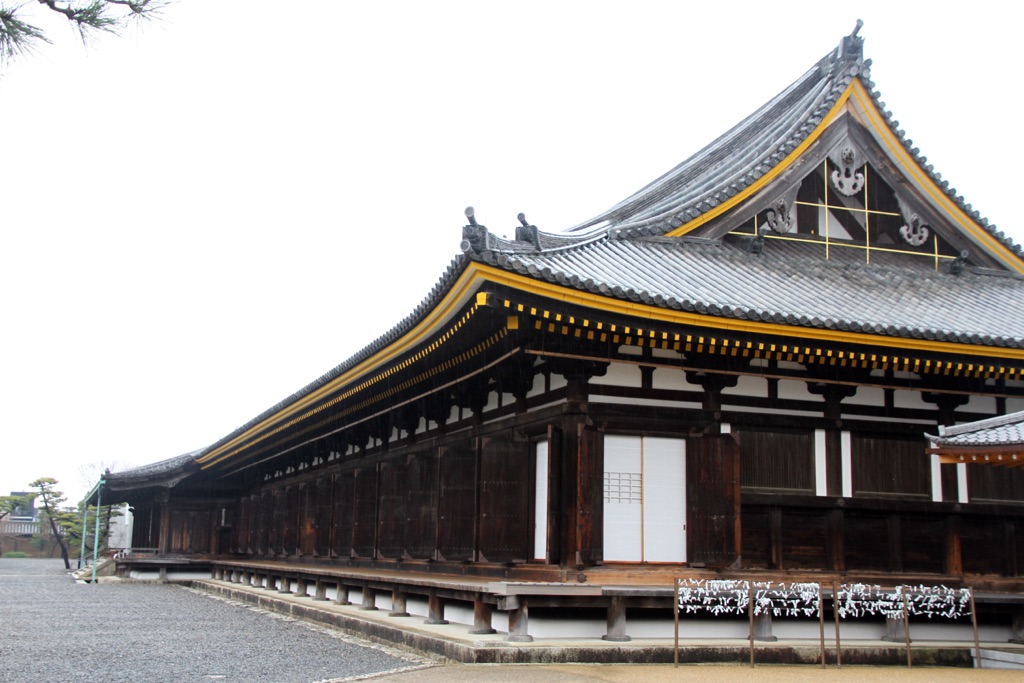Sanjusangendo, a renowned Buddhist temple in Kyoto, Japan, is famous for its 1001 statues of Kannon, the goddess of mercy. Its name literally means “Hall with thirty-three spaces,” which refers to the number of intervals between the building’s support columns. This architectural marvel, officially known as Rengeo-in, dates back to the 13th century and is a testament to the craftsmanship and religious devotion of Japan’s Heian period. The temple’s long, wooden hall is the longest in Japan and houses a collection of statues that are considered national treasures.
Get your dose of History via Email
Historical Background of Sanjusangendo
Sanjusangendo was founded in 1164 under the order of Emperor Go-Shirakawa. The temple’s construction was a monumental project of the time. It was completed in 1165 and dedicated to the Bodhisattva Kannon. The original structure, however, fell victim to a fire during a civil war in 1249. The current hall was reconstructed in 1266, remaining faithful to the original design. The temple has since stood the test of time, surviving natural disasters and wars.
The warrior class, particularly the famous samurai archers, held Sanjusangendo in high esteem. They often held archery tournaments in the temple’s grounds. These contests weren’t just for sport: they were also spiritual events. The temple’s long hall made it an ideal location for showcasing archery skills, which were considered a form of meditation and a way to honor the divine.
Throughout the centuries, Sanjusangendo has attracted pilgrims and visitors. Its collection of Kannon statues, each with a unique face and pose, is a significant draw. The temple’s main deity is a massive, seated Kannon, flanked by 1000 life-sized standing Kannons, all crafted by skilled artisans of the era. These statues represent the deity’s 1000 arms, symbolizing the boundless compassion of Kannon.
Sanjusangendo’s significance extends beyond religion. It is a cultural treasure that offers insights into the artistic and spiritual life of historical Japan. The temple has been a subject of literary works and historical records, which highlight its importance in Japanese culture. It remains a place of worship and a popular tourist destination, reflecting the enduring legacy of Japan’s religious traditions.
Notably, Sanjusangendo has been the scene of important historical events. For instance, the aforementioned archery tournaments, known as Toshiya, grew in fame during the Edo period. These events were not only a test of skill but also a rite of passage for young warriors. The temple’s long history is intertwined with the history of Kyoto and Japan, making it an essential site for understanding the country’s past.
About Sanjusangendo
Sanjusangendo’s architectural design is a marvel of the Kamakura period. The temple’s hall measures approximately 120 meters, making it the longest wooden structure in Japan. The building reflects the traditional wayo style, which avoids ornate designs in favor of simplicity and harmony with nature. The hall’s roof is supported by 134 columns, creating 33 bays between them, hence the temple’s name.
The temple’s main attraction is the 1001 statues of Kannon. Carved from Japanese cypress and adorned with gold leaf, these statues are a testament to the Heian period’s craftsmanship. The central image of the seated Kannon is a work of the famous sculptor Tankei and is flanked by 500 statues on each side, arranged in ten rows and fifty columns.
Each of the 1000 standing Kannon statues has 11 faces and 40 arms, each arm representing the saving of 25 worlds, thus reflecting the immense compassion and mercy of the deity. The statues underwent a major restoration in the 20th century, ensuring their preservation for future generations. The hall itself is a masterpiece of engineering, designed to withstand earthquakes, a frequent threat in Japan.
The temple’s interior is dimly lit, creating an atmosphere of reverence and awe. The play of light and shadow on the golden statues gives them an ethereal quality, as if they were indeed divine beings. The alignment of the statues in rows creates a visual rhythm that draws visitors down the length of the hall, inviting contemplation and reflection.
Sanjusangendo is not only a place of religious significance but also a cultural asset. It has been designated as a National Treasure of Japan and is protected by law. The temple’s annual archery event continues to this day, preserving the martial tradition associated with the temple and offering a glimpse into the samurai culture of the past.
Theories and Interpretations
The 1001 statues of Kannon in Sanjusangendo have been the subject of various interpretations. Some scholars suggest that the sheer number of statues was meant to convey the infinite compassion of the Bodhisattva. Others believe that the arrangement and specific features of the statues contain symbolic meanings related to Buddhist teachings.
The temple’s long hall has also sparked theories about its purpose. While it is clear that it was built for worship, the hall’s length and structure made it ideal for archery tournaments. This dual purpose suggests a fusion of martial and spiritual practices in Japanese culture.
There are mysteries surrounding the individual statues as well. Each one has a unique face, leading to speculation about whether they were modeled after real people. This theory has not been confirmed, but it adds a layer of intrigue to the temple’s history.
Historians have matched the temple’s architectural style and the statues’ craftsmanship to historical records from the Heian period. This has helped date the temple and its contents accurately. However, the exact reasons for some of the artistic choices remain a matter of interpretation.
Dating of the statues and the building has been carried out using both historical documentation and scientific methods. Radiocarbon dating and analysis of the wood and paint layers have provided insights into the age of the statues and the hall. These methods have confirmed the temple’s origins in the 12th and 13th centuries.
At a glance
- Country: Japan
- Civilization: Heian period
- Age: Founded in 1164, rebuilt in 1266 AD

